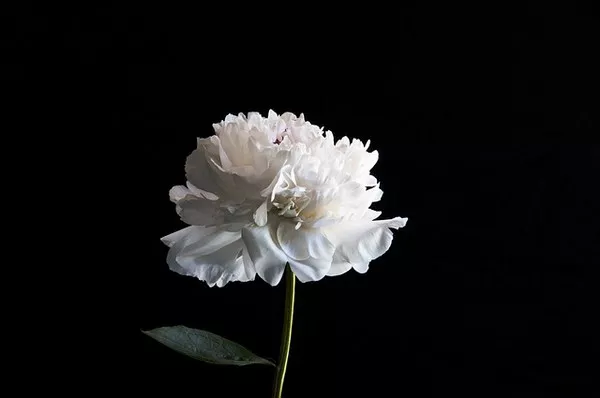In the realm of gardening, where sunlight reigns supreme, shade often takes a backseat. Yet, within the cool embrace of shaded corners lies a verdant world waiting to be discovered. Shade-loving perennials, with their delicate blooms and lush foliage, offer a captivating alternative to sun-soaked gardens.
Types of Shade
1. Full Shade: Areas that receive no direct sunlight throughout the day fall under the category of full shade. These spaces are often found beneath dense tree canopies or on the north side of buildings.
2. Partial Shade: Partial shade refers to areas that receive limited sunlight, typically for only part of the day. This could be due to the presence of tall trees or structures that filter sunlight.
3. Dappled Shade: Dappled shade occurs when sunlight filters through overhead tree branches, creating shifting patterns of light and shadow on the ground below. This type of shade is ideal for plants that can tolerate intermittent sunlight.
Importance of Shade Levels
The amount of sunlight a plant receives directly influences its growth and flowering patterns. Choosing perennials that are well-suited to the level of shade in a particular area increases their chances of thriving. Neglecting to consider shade levels can result in poor plant performance and disappointing garden aesthetics.
Variety of Shade-Loving Perennials
When it comes to shade-loving perennials, there is a diverse array of options to choose from. Here are some examples categorized by their bloom times:
1. Early Bloomers:
Hellebores (Helleborus spp.): These elegant flowers bloom in late winter to early spring, offering a splash of color when few other plants are flowering. Hellebores come in various shades, including white, pink, purple, and green.
Lungworts (Pulmonaria spp.): Known for their unique spotted leaves and clusters of pink, blue, or white flowers, lungworts are early bloomers that thrive in partial to full shade.
Primroses (Primula spp.): Primroses brighten up the garden with their cheerful blooms in shades of yellow, pink, purple, and white. They prefer moist, well-drained soil and partial shade.
2. Mid-Season Bloomers:
Astilbes (Astilbe spp.): With their feathery plumes of flowers in shades of pink, red, white, and lavender, astilbes add texture and color to shaded areas. They thrive in moist soil and partial shade.
Bleeding Hearts (Dicentra spp.): These romantic perennials produce heart-shaped flowers in shades of pink, white, or red. Bleeding hearts prefer partial to full shade and consistently moist soil.
Hostas (Hosta spp.): Known for their lush foliage and tolerance of shade, hostas come in various sizes and colors, ranging from small, compact varieties to large, bold specimens. Some varieties feature variegated leaves for added visual interest.
3. Late Bloomers:
Japanese Anemones (Anemone hupehensis): These graceful perennials produce delicate flowers in shades of pink or white from late summer to fall. Japanese anemones thrive in partial shade and well-drained soil.
Toad Lilies (Tricyrtis spp.): Toad lilies are prized for their unique orchid-like flowers that appear in late summer to early fall. They prefer partial to full shade and moist, humus-rich soil.
4. Foliage Plants:
Heucheras (Heuchera spp.): Heucheras, also known as coral bells, are valued for their colorful foliage, which ranges from shades of green to purple, bronze, and silver. They produce delicate spikes of flowers in summer and prefer partial shade.
Ferns: Ferns are classic shade-loving plants appreciated for their graceful fronds and lush greenery. They come in various shapes and sizes, making them versatile additions to shaded gardens.
Hostas: In addition to their attractive foliage, hostas also produce spikes of lavender or white flowers in summer. They are ideal for filling in gaps in shaded areas and creating a lush, leafy backdrop.
Plant Characteristics
Each shade-loving perennial has its own unique characteristics, including:
Bloom Time, Color, and Size: Knowing when a plant blooms and the color and size of its flowers helps in planning a well-coordinated garden design.
Height and Spread: Consider the mature size of each plant to ensure proper spacing and prevent overcrowding.
Foliage Type and Color: Pay attention to the texture, shape, and color of the foliage, as it adds visual interest even when the plant is not in bloom.
Growing Conditions: Understand the specific soil and moisture requirements of each plant to provide optimal growing conditions.
Design Tips
When designing a shade garden with perennials, consider the following tips:
Layer Plants: Create depth and interest by planting taller specimens towards the back of the garden and shorter plants towards the front.
Mix Textures and Colors: Combine plants with different foliage textures and flower colors to add visual contrast and dimension.
Include Evergreens: Incorporate evergreen perennials or shrubs to provide year-round structure and color.
Add Non-Flowering Elements: Include elements such as ornamental grasses, rocks, and decorative containers to enhance the overall aesthetic.
Companion Plants: Pair shade-loving perennials with compatible companion plants, such as spring-blooming bulbs, woodland natives, and ground covers, to create a cohesive and diverse garden ecosystem.
Conclusion
By carefully selecting shade-loving perennials and considering their unique characteristics and growing requirements, you can create a beautiful and thriving garden even in the shadiest of spaces. With a thoughtful design and proper care, your shade garden can become a tranquil oasis of color and texture for years to come.


